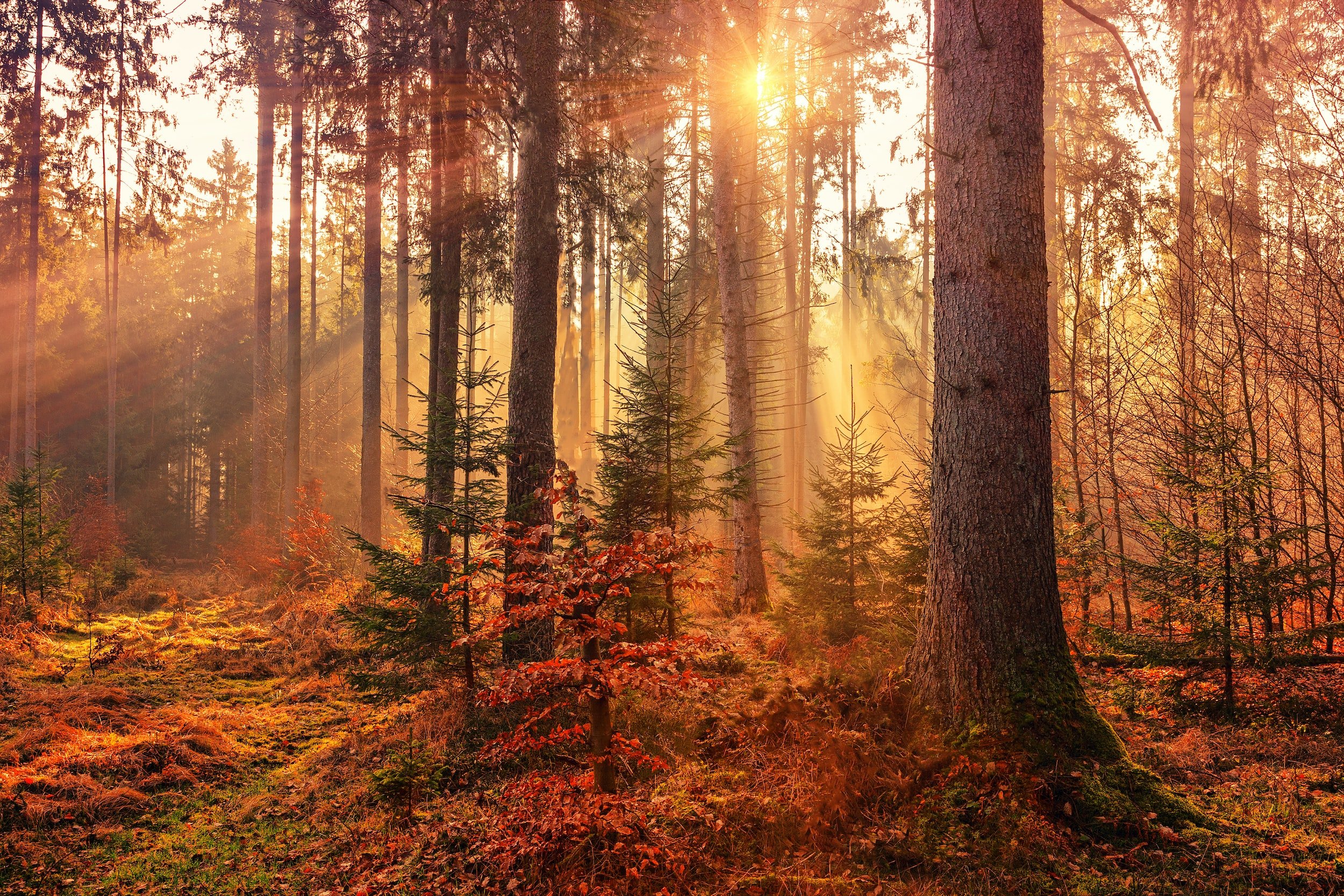Learning to Fall: Lessons in Change from the Season
The fall season, with dynamic shifts in light, temperature, and color, is a natural time to reflect on the process of change. At this time of year, we’re surrounded by messages encouraging us to “embrace change,” often accompanied by images of trees with leaves shining in gorgeous reds, oranges and yellows, or children running and laughing through vibrant heaps of fallen leaves. Trees in full, bright regalia make change look beautiful, even easy. Who wouldn’t want to “embrace” change that promised to be so glorious?
But trees don’t turn bright colors overnight. And changes in our lives are seldom simple or spectacular, and accepting, let alone embracing, them can be daunting. While these messages are well-meaning and contain a truth that the shifting seasons can provide rich guidance for living, they may overlook the gradual, often messy process of change that can include vulnerability, loss, uncertainty and profoundly mixed emotions. Rather than inspired, we may feel discouraged to acknowledge we feel conflicted or not ready to celebrate the transition from summer to fall or the life changes that this season can be seen to symbolize.
Maybe there is a more helpful and comforting way to look to the season for guidance that includes our various, sometimes conflicting, feelings and recognizes them as an essential part of growth and change. A fall day, balanced between the opposite worlds of summer and winter and containing elements of both, can evoke a bittersweet sense of what’s past or passing, what’s present, and what’s to come. A bright, sunny afternoon laced with threads of chill, tree leaves mottled green and gold, and sunset arriving sooner than the day before might bring a tangled sense of loss, restlessness and anticipation that’s hard to name or understand. You might struggle with sadness or depression during darker winter months and feel worry or even dread when fall arrives and shortens daylight hours. You might have had hopes for summer months that didn’t come to fruition and feel regret or bitterness to realize summer has ended. This October in the Pacific Northwest, you might be troubled by the warmer-than-usual temperatures and smoky skies from fires and be concerned about climate change and/or health issues. Or you might appreciate fall without any conflict, looking forward to wearing favorite sweaters, lighting candles and participating in traditions of the season. If so, that’s lovely! But perhaps there’s something else in your life that holds complicated feelings, a change you’d like to make but are feeling stuck, an unexpected transition you’re trying to adjust to, or a loss you haven’t fully mourned.
Whatever our responses to this shifting season, observing nature’s transitions can help us recognize how change moves in fits, starts and stages. This appreciation of the incremental nature of growth can help us develop more patience with our own hesitations or perceived mistakes and more compassion for our conflicting feelings and vulnerability.
A practice of observing the season can be simple and become a part of daily life that doesn’t require lots of time or skill. I call it a practice of slowness and attention. It can be done in a number of ways. Walking among trees or sitting and looking at trees is one way. Visiting one tree over time is another way, studying its shape and movements, noticing subtle ways its appearance alters and how light moves across it. Paying attention to all your senses, noting how air feels on your skin on different days and layers of sounds and smells. There is a maple tree across the street from a bus stop where I’ve waited for countless buses over the years. I look at that tree like the face of an old friend, having witnessed its many beautiful changes, and feel better able to see my own changes too.
Trees can be great teachers of flexibility, steadiness, generosity and change. They move with the wind but hold their ground, generously host birds in their branches, some shift their leaves to vivid hues to brighten an otherwise dreary day, then offer those leaves up to become shelter for small animals, stomping piles for children, mulch to enrich soil. Winter trees, standing bare, might reflect our own feelings of being vulnerable and exposed as we undergo a period of transition or might help us contemplate and accept death and loss as part of life.
If you don’t have a tree or public space nearby to watch trees, there are many other ways to practice slowness and attention to the natural world. Taking 5 minutes a day to look through a window at sunlight moving across the side of a building or a sidewalk, or birds flying and settling, can also illuminate the way everything is moving and remind us that that includes us too. Even when we feel stuck or unsure, slowing down and noticing what we’re feeling and connecting to lessons learned from the natural world can help us see our movements and greet our difficulties with more kindness as all part of our process. With a greater appreciation of change as an often wobbly, awkward and uncomfortable undertaking, we might find that embracing it feels more possible.
Emily West is a Self Space Eastside therapist who serves clients experiencing grief and loss, anxiety, depression, relationship issues, impacts of trauma, identity exploration and life transitions. She is also passionate about supporting adults in greeting and navigating life changes.

